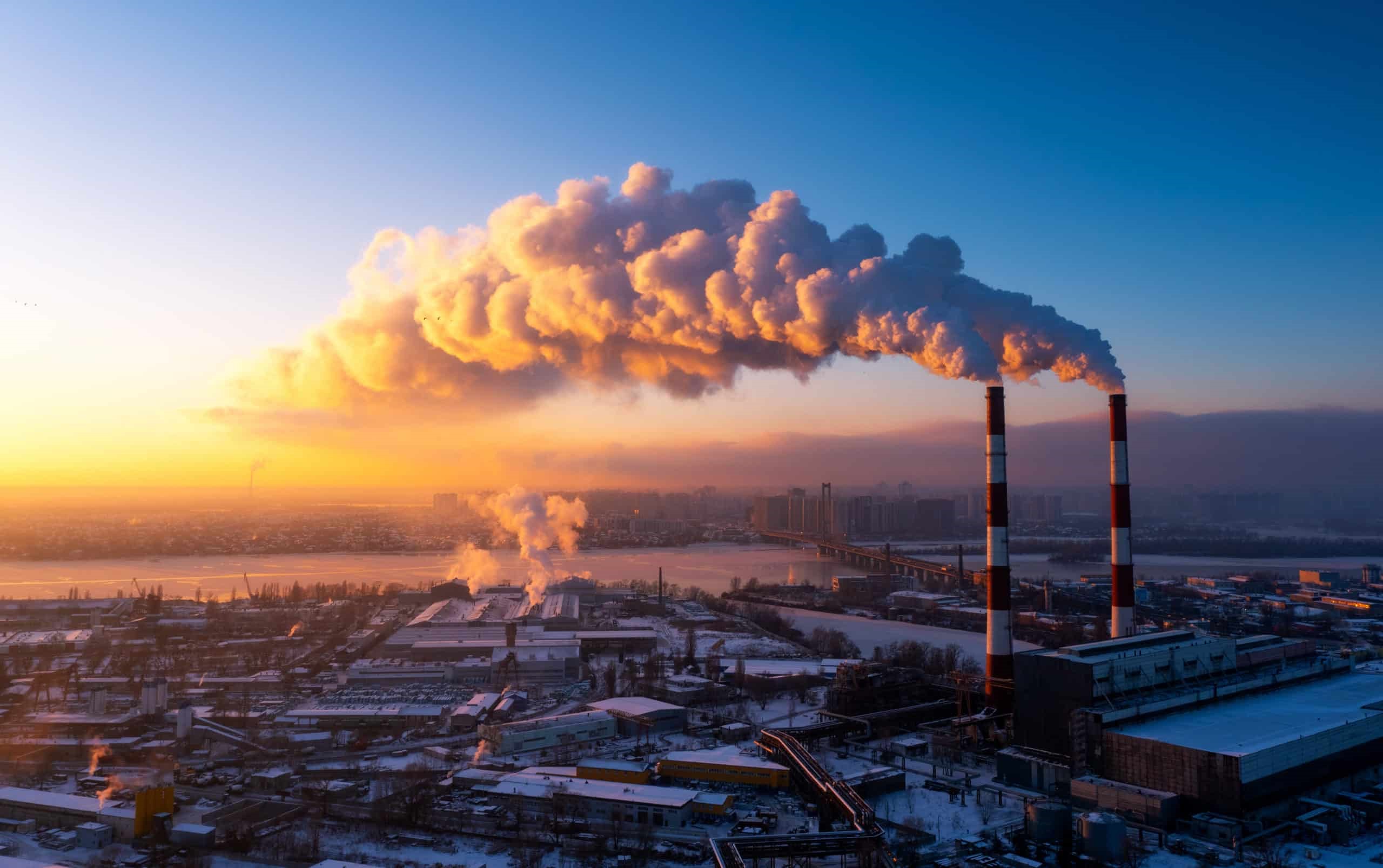Home>Science & Environment>The Effects Of Heating Water


Science & Environment
The Effects Of Heating Water
Published: February 19, 2024
Explore the impact of heating water on the environment and delve into the science behind this phenomenon. Learn about the environmental implications of heating water.
(Many of the links in this article redirect to a specific reviewed product. Your purchase of these products through affiliate links helps to generate commission for Temperatures.com, at no extra cost. Learn more)
Table of Contents
Introduction
Water is an essential component of our daily lives, serving as a fundamental necessity for various activities, including cooking, cleaning, and hydration. When water is subjected to heat, whether for cooking, brewing beverages, or other purposes, it undergoes a series of physical and chemical changes that can significantly impact its properties. Understanding the effects of heating water is crucial for comprehending the alterations it undergoes and the implications for its applications.
Heating water causes it to transition from a liquid state to a gaseous state, a process known as evaporation. This physical change is visually evident as the water begins to form bubbles and eventually transforms into steam. Additionally, the application of heat can lead to changes in the water's temperature, affecting its ability to dissolve substances and altering its physical state. These alterations play a pivotal role in various culinary and scientific processes, making it imperative to grasp the transformations that occur when water is heated.
Moreover, the chemical changes induced by heating water are equally significant. The application of heat can lead to the breakdown of certain compounds present in the water, potentially altering its chemical composition. For instance, the heating of water can result in the release of dissolved gases, such as oxygen and carbon dioxide, which can influence the overall chemical equilibrium of the water. Understanding these chemical changes is vital for assessing the suitability of heated water for specific applications, particularly in scientific experiments and industrial processes.
In addition to the physical and chemical alterations, heating water can impact its nutrient content. Certain nutrients, such as minerals and vitamins, may be affected by the application of heat, potentially leading to their degradation or alteration. This aspect is particularly relevant in the context of cooking, as the nutritional value of foods prepared with heated water can be influenced by the temperature and duration of heating. Therefore, comprehending the effects of heating water on nutrient content is essential for making informed dietary choices and optimizing the nutritional quality of prepared meals.
As we delve into the multifaceted effects of heating water, it becomes evident that this seemingly simple process yields a myriad of transformations, each with its own implications. By exploring the physical and chemical changes, the impact on nutrient content, and other related aspects, we can gain a comprehensive understanding of the intricate alterations that occur when water is subjected to heat. This knowledge forms the foundation for making informed decisions regarding the utilization of heated water in various contexts, ranging from culinary endeavors to scientific pursuits.
The Physical Changes in Water
When water is subjected to heat, it undergoes a series of physical changes that are integral to numerous processes in our daily lives. The application of heat to water leads to an increase in its temperature, causing the water molecules to gain kinetic energy and move more rapidly. As the temperature continues to rise, the water eventually reaches its boiling point, at which the transition from a liquid state to a gaseous state occurs. This transformation is known as evaporation and is characterized by the formation of bubbles within the water, signaling the release of water vapor.
The physical changes in water due to heating are visually evident and play a crucial role in various culinary and scientific applications. For instance, in the realm of cooking, the boiling of water is a fundamental step in preparing a wide array of dishes, from pasta and rice to soups and stews. The transition of water from a liquid to a gaseous state facilitates the cooking process by allowing ingredients to be immersed in a hot, vapor-rich environment, thereby aiding in the breakdown of starches and proteins and enhancing the overall flavor and texture of the prepared dishes.
Furthermore, the physical changes in water extend beyond culinary endeavors and find relevance in scientific experiments and industrial processes. In laboratories, the precise control of water temperature and the observation of its evaporation are essential for conducting experiments that involve the manipulation of chemical compounds and biological samples. Additionally, in industrial settings, the evaporation of water is harnessed for various purposes, such as the production of steam for powering machinery and the concentration of liquid solutions through the removal of water.
The physical changes in water induced by heating also influence its ability to dissolve substances and alter its physical state. For instance, the transition of water from a liquid to a gaseous state can be harnessed in the distillation process, where impurities are separated from water through evaporation and subsequent condensation. This technique is employed in the production of distilled water, alcoholic beverages, and essential oils, highlighting the practical implications of the physical changes that occur when water is heated.
In essence, the physical changes in water resulting from the application of heat are pivotal in shaping its properties and applications. By comprehending the transition from a liquid to a gaseous state, the impact on cooking and scientific processes, and the implications for industrial utilization, we gain a holistic understanding of the multifaceted transformations that take place when water is heated. These physical changes underscore the dynamic nature of water and its significance in a myriad of contexts, underscoring the importance of understanding the effects of heating water.
The Chemical Changes in Water
When water is subjected to heat, it undergoes not only physical transformations but also significant chemical changes that have far-reaching implications. The application of heat to water leads to alterations in its chemical composition, influencing the equilibrium of dissolved gases and potentially affecting the presence of other compounds.
One of the primary chemical changes induced by heating water is the release of dissolved gases. As the temperature of water increases, the solubility of gases, such as oxygen and carbon dioxide, decreases. This phenomenon leads to the liberation of these gases from the water, impacting the overall chemical equilibrium. The release of dissolved gases can have implications for various applications, including the brewing of beverages, where the presence of specific gases contributes to the sensory attributes of the final product.
Furthermore, the heating of water can lead to the breakdown of certain chemical compounds present in the water. For instance, the application of heat can influence the dissociation of mineral salts and the hydrolysis of organic molecules, potentially altering the chemical composition of the water. These chemical changes are particularly relevant in scientific experiments and industrial processes, where the precise control of water chemistry is essential for achieving accurate results and maintaining the integrity of chemical reactions.
Moreover, the chemical changes in water induced by heating can impact its suitability for specific purposes. For example, in the context of water treatment and purification, the application of heat can aid in the removal of certain contaminants and the inactivation of microorganisms through chemical reactions. Additionally, in the preparation of various beverages, such as tea and coffee, the chemical changes in water play a crucial role in extracting flavors and compounds from the raw ingredients, ultimately influencing the sensory characteristics of the final products.
In essence, the chemical changes in water resulting from the application of heat are integral to understanding its dynamic nature and the implications for a myriad of applications. By delving into the release of dissolved gases, the breakdown of chemical compounds, and the impact on water chemistry, we gain a comprehensive understanding of the intricate transformations that occur when water is heated. These chemical changes underscore the multifaceted nature of water and its significance in diverse contexts, highlighting the importance of comprehending the effects of heating water.
The Impact on Nutrient Content
The impact of heating water on nutrient content is a critical aspect that warrants attention, particularly in the realm of culinary practices and dietary considerations. When water is subjected to heat, certain nutrients present in the water or in foods prepared with heated water may undergo alterations, potentially affecting their nutritional value.
One of the primary nutrients that can be influenced by the heating of water is vitamin C. This essential vitamin, known for its antioxidant properties and role in supporting immune function, is sensitive to heat and can degrade when exposed to high temperatures. When water is heated for cooking or beverage preparation, the vitamin C content in fruits, vegetables, or other ingredients immersed in the water may be affected, leading to a reduction in the overall vitamin C concentration in the final dish or beverage.
Similarly, the heating of water can impact the mineral content of foods prepared with heated water. Certain minerals, such as potassium and magnesium, may leach into the water during the cooking process, leading to a potential loss of these essential nutrients in the prepared dishes. Additionally, the alteration of water chemistry due to heating can influence the bioavailability of minerals, affecting their absorption and utilization by the body upon consumption.
Furthermore, the impact of heating water on nutrient content extends to the realm of beverage preparation, particularly in the context of tea and coffee. The temperature and quality of the water used for brewing these beverages can significantly influence the extraction of compounds, including polyphenols and caffeine, which contribute to their sensory attributes and potential health benefits. Understanding the impact of water temperature on nutrient extraction is crucial for optimizing the flavor and nutritional profile of brewed beverages.
In essence, the impact of heating water on nutrient content underscores the intricate interplay between culinary practices, dietary considerations, and the preservation of essential nutrients. By recognizing the potential alterations in vitamin C, minerals, and other bioactive compounds, we can make informed choices regarding cooking methods, beverage preparation, and overall dietary practices to maximize the retention of nutritional value. This awareness highlights the significance of considering the impact of heating water on nutrient content in the pursuit of maintaining a balanced and nourishing diet.
The Effects on Taste and Odor
The effects of heating water extend beyond its physical and chemical transformations to encompass significant alterations in taste and odor, thereby influencing the sensory attributes of prepared dishes and beverages. When water is heated, several factors contribute to changes in taste and odor, ultimately shaping the overall flavor profile of the final products.
One of the primary effects of heating water on taste and odor is the release of volatile compounds. As the water reaches its boiling point and undergoes evaporation, volatile compounds present in the water, such as chlorine and other disinfection byproducts, may be liberated into the surrounding environment. These compounds can contribute to off-flavors and odors in the water, subsequently impacting the sensory experience of foods and beverages prepared with the heated water. Additionally, the release of volatile compounds can be particularly noticeable in tap water, where the presence of residual disinfectants and organic matter can lead to discernible changes in taste and odor following the application of heat.
Furthermore, the temperature of the water used for brewing beverages, such as tea and coffee, plays a pivotal role in extracting flavor compounds from the raw ingredients. The heating of water to specific temperatures can influence the extraction of desirable flavor components, such as aromatic oils and polyphenols, which contribute to the overall taste and aroma of the brewed beverages. Moreover, the quality of the water, including its mineral content and absence of off-flavors, directly impacts the sensory attributes of the final products, highlighting the significance of considering the effects of heating water on taste and odor in beverage preparation.
In the realm of culinary practices, the effects of heating water on taste and odor are evident in the preparation of soups, stews, and other dishes that utilize heated water as a primary cooking medium. The presence of residual flavors and odors in the water, stemming from its source and treatment processes, can influence the overall taste profile of the prepared dishes. Additionally, the temperature at which water is heated for cooking can impact the release of volatile compounds from ingredients, further influencing the sensory attributes of the final culinary creations.
In essence, the effects of heating water on taste and odor underscore the intricate relationship between water quality, culinary practices, and beverage preparation. By recognizing the release of volatile compounds, the influence of water temperature on flavor extraction, and the implications for overall taste and aroma, we gain a comprehensive understanding of the multifaceted transformations that occur when water is heated. These effects emphasize the importance of considering the sensory impact of heating water in culinary endeavors and beverage preparation, ultimately shaping the gustatory and olfactory experiences of the final products.
The Influence on Microorganisms
The influence of heating water on microorganisms is a critical aspect that encompasses both practical and health-related implications. When water is subjected to heat, whether for cooking, sanitation, or beverage preparation, the impact on microorganisms is profound and directly affects the safety and quality of the final products.
One of the primary effects of heating water is the inactivation of pathogenic microorganisms. As the temperature of water rises and approaches its boiling point, harmful bacteria, viruses, and parasites present in the water are rendered inactive or destroyed. This process, known as pasteurization, is crucial for ensuring the safety of drinking water and the prevention of waterborne diseases. Moreover, the application of heat in food preparation and preservation serves to eliminate harmful microorganisms, thereby reducing the risk of foodborne illnesses and ensuring the microbiological safety of the prepared dishes.
Furthermore, the influence of heating water on microorganisms extends to the realm of beverage preparation, particularly in the context of brewing tea and coffee. The use of hot water for brewing not only facilitates the extraction of flavor compounds but also contributes to the elimination of potential microbial contaminants. By subjecting the water to elevated temperatures during the brewing process, the proliferation of microorganisms is inhibited, thereby enhancing the microbiological quality of the brewed beverages.
In addition to the inactivation of pathogenic microorganisms, the heating of water can impact the presence of beneficial microorganisms, such as probiotic bacteria and yeast. While high temperatures can lead to the destruction of certain beneficial microorganisms, the precise control of water temperature is essential for preserving the viability of probiotics in fermented beverages and cultured foods. The influence of heating water on beneficial microorganisms underscores the delicate balance between ensuring microbiological safety and preserving the potential health benefits associated with probiotic consumption.
In essence, the influence of heating water on microorganisms highlights the pivotal role of temperature in ensuring the safety and quality of water, beverages, and prepared dishes. By recognizing the inactivation of pathogenic microorganisms, the impact on beneficial microorganisms, and the implications for microbiological safety, we gain a comprehensive understanding of the multifaceted transformations that occur when water is heated. These insights underscore the significance of considering the influence of heating water on microorganisms in safeguarding public health and promoting the microbiological integrity of consumable products.
Conclusion
In conclusion, the effects of heating water encompass a diverse array of transformations, spanning physical, chemical, nutritional, sensory, and microbiological aspects. The application of heat to water induces a series of physical changes, including the transition from a liquid to a gaseous state, which plays a pivotal role in culinary, scientific, and industrial processes. Moreover, the chemical changes in water resulting from heating influence its equilibrium of dissolved gases and can impact its suitability for specific applications, underscoring the dynamic nature of water chemistry.
Furthermore, the impact of heating water on nutrient content is a critical consideration in culinary practices and dietary choices, as the potential alterations in vitamins, minerals, and bioactive compounds necessitate informed decision-making to preserve nutritional value. Additionally, the effects of heating water on taste and odor highlight the sensory implications of water quality and temperature in culinary endeavors and beverage preparation, emphasizing the interplay between water chemistry and flavor profiles.
Moreover, the influence of heating water on microorganisms is integral to ensuring the safety and quality of drinking water, prepared dishes, and brewed beverages, underscoring the significance of temperature in microbial control and public health protection. By comprehending the multifaceted effects of heating water, individuals can make informed choices regarding cooking methods, beverage preparation, and overall water utilization, thereby optimizing the sensory attributes, nutritional value, and microbiological safety of consumable products.
In essence, the effects of heating water extend far beyond the physical act of applying heat, encompassing a complex interplay of transformations that shape the properties and applications of water in diverse contexts. By recognizing the intricate alterations in water's physical and chemical properties, the implications for nutrient content, taste, and odor, and the influence on microorganisms, individuals can harness this knowledge to elevate culinary experiences, promote health and safety, and advance scientific and industrial endeavors. Ultimately, understanding the effects of heating water empowers individuals to navigate the dynamic nature of this essential resource and leverage its transformative potential in various facets of daily life.














